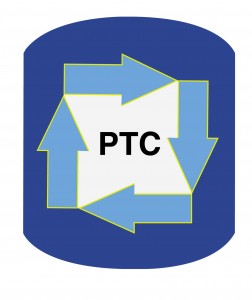Azeotropic drying is a common method for drying solvents and other liquids in industry. The same is true for drying phase-transfer catalysts that are shipped as an aqueous solution from the manufacturer.
Common phase-transfer catalysts that are shipped in water include methyl tributyl ammonium chloride (MTBAC) that is usually shipped as a 75% solution in water (25% water), tetrabutyl ammonium bromide (TBAB) that is sometimes shipped as a 50% solution in water (though more often as a solid) and hexaethylguanidinium chloride (HEG Cl) that is shipped as a 35% solution in water that also usually includes about 10-15% NaCl.
When you use azeotropic drying to remove water from aqueous solutions of phase-transfer catalysts, you must be aware of the thermal stability limitations of each catalyst and plan your heat history accordingly. MTBAC is less thermally stable than TBAB while HEG Cl is stable even above 215 C.
A patent dedicated to the azeotropic drying of HEG Cl in ODCB was issued in 2010 and can be read at US Patent 7,772,435. Most of the drying is done at 120-140 C and some up to 170 C.
A good example of using dry of HEG Cl in a 500 gallon reactor was described in US Patent 8,592,548 that was issued four days ago. o-Dichlorobenzene (ODCB) was used as the solvent for two consecutive reactions, an amidation and a nucleophilic aromatic substitution. HEG Cl was introduced into the reaction dissolved in ODCB as well. Since HEG Cl is stable at high temperature, the high boiling ODCB (b.p. 180 C) was able to be used. Azeotropic distillation was used to remove water in the first step of the reaction before the HEG Cl was added and azeotropic solvent stripping was used after the addition of the phase-transfer catalyst to “assure a dry slurry” before the next reactant was added.
Since HEG Cl is soluble in water, it was removed from the product by water washing after the chemical reactions.
MTBAC and TBAB are typically dried with much lower boiling azeotropes, such as with toluene. Note that the toluene-water azeotrope has a lower water content than chlorobenzene-water for example, but toluene is used more often because it is more commonly used as a solvent for the subsequent PTC reactions, so no solvent exchange is required after the drying.
HEG Cl is a catalyst that should be screened for PTC reactions at high temperatures for which the common quaternary ammonium phase-transfer catalysts are not stable enough (after performing a safety analysis of course). HEG Cl is commercially available from VanDeMark Chemical. If you don’t have a sample of HEG Cl in your lab, get one today.
If your company can benefit from achieving higher process performance in a shorter development time by having access to the best PTC expertise available, now contact Marc Halpern by E-mail or by phone at + 1 856-222-1146 to inquire about using phase-transfer catalysis to achieve low-cost high-performance green chemistry.
If you’re not sure if PTC can help your reaction, now fill out the form shown at http://phasetransfer.com/projectform.pdf and send it to Marc Halpern by fax at +1 856-222-1124 or by E-mail of a scanned copy. If we do not have a secrecy agreement already in place, please use “R-groups” instead of the exact chemical structures.

